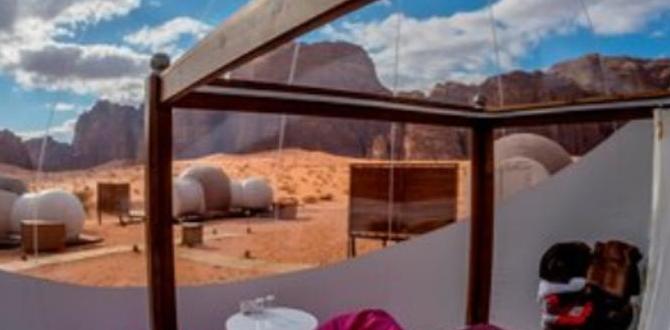Embark on an affordable and essential Belgium winter trip by focusing on cozy indoor activities, seasonal markets, and smart budget travel. Pack warm layers, plan around fewer crowds, and savor delicious local treats without breaking the bank. This guide offers practical tips for an unforgettable, cost-effective Belgian adventure.
Winter in Belgium can be a magical experience, but planning a trip during this season might seem daunting. You might worry about the cold, the crowds, or how to make it all affordable. Traveling should be exciting, not stressful. Imagine wandering through charming, frost-kissed streets, sipping rich hot chocolate, and discovering hidden gems without feeling rushed or overwhelmed. This guide is here to help you do just that. We’ll walk you through everything you need for a comfortable, memorable, and budget-friendly Belgian winter escape.
Why Belgium in Winter?
Belgium shines in winter, transforming into a fairytale landscape. The bustling summer crowds thin out, offering a more intimate experience with its historic cities and charming towns. The crisp air is perfect for exploring, and the cozy atmosphere inside cafes and pubs is irresistibly inviting. Plus, winter is a fantastic time to find better deals on accommodation and flights.
The Magic of Belgian Christmas Markets
If you’re planning a winter trip, you absolutely cannot miss Belgium’s famous Christmas markets. From late November through December, cities across Belgium transform into festive wonderlands.
Brussels: The “Winter Wonders” market in Brussels is one of the largest and most popular. It features a giant Ferris wheel, an ice rink, and countless stalls selling crafts, gifts, and delicious festive food. The Grand Place, illuminated by a stunning Christmas tree and light show, is truly breathtaking.
Bruges: Bruges’ markets, nestled among medieval canals and cobbled streets, offer a romantic and enchanting atmosphere. Sample mulled wine (glühwein), admire handmade ornaments, and soak in the picturesque setting.
Ghent: Ghent’s charming market blends tradition with innovation, often featuring a beautiful ice sculpture trail and a lively atmosphere.
Antwerp: Antwerp’s market is known for its diverse offerings, from artisan crafts to gourmet food stalls, all set against the backdrop of the city’s stunning architecture.
These markets are not just about shopping; they are a cultural experience. Indulge in Belgian waffles, try some authentic Belgian fries (frites), and warm up with a cup of hot chocolate or jenever (Belgian gin).
Essential Packing for a Belgium Winter Trip
Packing smart is key to staying comfortable and ensuring your trip is affordable. You don’t want to be caught in the cold without the right gear, nor do you want to overpack and pay extra for luggage. The goal is to be warm, dry, and prepared for anything.
Layering is Your Best Friend
The temperature in Belgium during winter typically ranges from 0°C to 8°C (32°F to 46°F), with occasional drops below freezing. Dressing in layers allows you to adjust to changing temperatures as you move between the outdoors and cozy indoor environments.
Here’s a breakdown of what to pack:
- Base Layer: Thermal underwear (long johns and long-sleeved tops) made of merino wool or synthetic fabric. These wick away moisture and provide insulation.
- Mid Layer: Fleece jackets, sweaters, or hoodies. This layer adds warmth.
- Outer Layer: A waterproof and windproof coat. A down jacket or a sturdy parka is ideal. Ensure it has a hood for extra protection against rain and wind.
- Bottoms: Warm trousers or jeans. Consider adding thermal leggings underneath if you tend to get cold easily. Waterproof over-trousers can be a lifesaver if you plan on spending a lot of time outdoors in damp conditions.
- Footwear: Waterproof, comfortable walking shoes or boots with good traction are essential. You’ll be doing a lot of walking on potentially wet or icy surfaces. Pack wool or thermal socks to keep your feet warm.
- Accessories:
- A warm hat (beanie or bobble hat)
- A scarf for neck warmth
- Waterproof gloves or mittens
- Extras for Comfort:
- Small, portable umbrella
- Reusable water bottle – you can refill it at many cafes or tap water is safe to drink in Belgium.
- A small backpack or day bag for carrying essentials like snacks, a water bottle, a portable charger, and any layers you shed.
- Consider travel-sized toiletries to save space and weight.
Managing Personal Care Needs
For travelers who may need extra support, like those using adult or child diapers, packing strategically ensures comfort and dignity throughout the trip. Opt for highly absorbent, discreet products designed for extended wear. Consider using a discreet travel bag for easy access and storage. Many modern adult and child diapers are designed to be thin and breathable, minimizing bulk and discomfort, making them suitable even for long travel days or chilly winter explorations. Remember to pack a few extra than you think you’ll need, along with disposal bags for hygiene and convenience.
Affordable Accommodation Options
Finding comfortable and affordable places to stay is crucial for any budget trip. Belgium offers a range of options that cater to different preferences and budgets.
Hostels
Hostels are fantastic for solo travelers or groups looking for community and savings. Many hostels in major Belgian cities offer private rooms as well as dormitories, providing a balance of privacy and affordability. They often have communal kitchens, which can help you save money by preparing some of your own meals.
Budget Hotels and Guesthouses
Look for independent hotels or guesthouses slightly outside the absolute city center. While convenient, staying right next to major attractions can be significantly more expensive. Using booking websites and comparing prices can help you find good deals.
Airbnb and Vacation Rentals
Renting a room or an apartment through platforms like Airbnb can also be cost-effective, especially for longer stays or for families traveling together. It often provides more space and the option to cook, further reducing costs.
Timing Your Booking
Booking your accommodation in advance, especially if you are traveling during peak winter market season (late November to December), is highly recommended. Last-minute bookings can be significantly more expensive.
Budget-Friendly Transportation in Belgium
Belgium has an excellent public transportation system, making it easy and affordable to travel between cities and within them.
Trains: The Belgian Rail Network
The national railway company, SNCB/NMBS, operates an extensive network connecting all major cities and most towns. Trains are frequent, punctual, and a comfortable way to travel.
Day Ticket: For unlimited travel within Belgium on a single day, the “De Lijn” or “TEC” day tickets are excellent value if you plan on multiple journeys within a region.
Off-Peak Fares: If you’re traveling on a weekend or during off-peak hours on weekdays, look for special offers.
Rail Pass: If you plan on extensive intercity travel over several days, investigate if a rail pass makes sense for your itinerary.
Local Public Transport (Cities)
Within cities like Brussels, Antwerp, Ghent, and Bruges, you’ll find efficient tram, bus, and metro systems.
Day Passes: Most cities offer 24-hour or multi-day passes for their public transport, which are usually more economical than buying single tickets if you plan on using transport frequently.
Walking: Many Belgian cities are very walkable, especially their historic centers. Walking is free, great exercise, and allows you to discover charming hidden corners you might otherwise miss.
Car Rental
While convenient for exploring rural areas, renting a car for city-to-city travel in Belgium is generally not recommended for budget travelers. Parking can be expensive and difficult to find in city centers, and navigation can be challenging.
Affordable Activities and Sightseeing
Belgium is packed with incredible sights and experiences that don’t cost a fortune. The key is to look for free attractions and make smart choices about paid entries.
Free and Low-Cost Attractions
Wander Through Historic Centers: Simply walking through the UNESCO World Heritage sites of Bruges, Ghent, or Brussels is an experience in itself. Admire the architecture, canals, and lively squares.
Churches and Cathedrals: Many stunning churches and cathedrals, like the Cathedral of St. Michael and St. Gudula in Brussels or St. Bavo’s Cathedral in Ghent, are free to enter and explore.
Parks and Public Spaces: Enjoy a winter stroll through city parks. The Parc du Cinquantenaire in Brussels offers impressive monuments and free museums within its grounds.
Window Shopping and Atmosphere: Explore the charming boutiques and soak in the festive atmosphere of the Christmas markets.
Smart Choices for Paid Attractions
City Passes: If you plan to visit many museums and attractions, investigate city passes. These can offer great value by bundling entry fees and sometimes include public transport. However, do the math to ensure it’s cheaper than individual tickets for the specific attractions you want to see.
Museum Days: Some museums offer free admission on certain days or evenings. Check their websites for details.
Prioritize: Decide which paid attractions are most important to you and focus on those. You don’t need to see everything!
Eating and Drinking on a Budget
Belgian cuisine is renowned, and you can enjoy its delights without overspending.
Embrace Street Food and Markets
Frites (Fries): Belgian fries are a national treasure. Served in a cone with a variety of sauces, they make a cheap and filling snack or light meal.
Waffles: Whether you prefer the Brussels waffle (light and crispy) or the Liège waffle (denser, sweeter, and often with pearl sugar), both are delicious and affordable treats.
Street Food Stalls: At Christmas markets and public squares, you’ll find stalls selling everything from sausages and crepes to hearty stews, perfect for a quick, warm meal.
Savvy Restaurant Choices
Lunch Specials (Dagschotel / Plat du Jour): Many restaurants offer a fixed-price lunch menu on weekdays, which is significantly cheaper than ordering à la carte or dining in the evening.
Local Brasseries and Cafes: Venture slightly away from the main tourist squares to find more authentic and reasonably priced eateries.
Supermarkets and Bakeries: For truly budget-friendly meals, stock up on bread, cheese, meats, and pastries from local supermarkets and bakeries. These are perfect for picnic lunches or simple dinners if your accommodation has cooking facilities.
Enjoying Belgian Beer and Chocolate Responsibly
Beer: Belgium is famous for its beers. While some craft beers can be pricey, trying local specialties at a less touristy bar can be an affordable cultural experience. Look for happy hour deals if available.
Chocolate: You don’t need to buy the most expensive fancy boxes. Many excellent chocolatiers offer smaller, more affordable selections, and sampling is often allowed!
Sample Itinerary: 4 Days in Belgium on a Budget
This itinerary focuses on two of Belgium’s most popular cities, Brussels and Bruges, and offers a mix of iconic sights and affordable experiences.
Day 1: Brussels – Grandeur and Grandeur
Morning (Free): Arrive in Brussels. Head to the Grand Place, a UNESCO World Heritage site, and marvel at the stunning Town Hall and guildhouses. Visit the nearby Manneken Pis statue (and perhaps its often-overlooked counterparts, Jeanneke Pis and Zinneke Pis).
Lunch (Budget): Grab some authentic Belgian fries from a street vendor near the Grand Place or a sandwich from a local bakery.
Afternoon (Low Cost/Free): Explore the Royal Galleries of Saint-Hubert, a beautiful 19th-century shopping arcade. Wander through the Sablon district, known for its antique shops and chocolatiers.
Evening (Budget): For a cheap and cheerful meal, find a local friterie or a casual eatery in the Saint-Géry area. If visiting during the Christmas season, immerse yourself in the “Winter Wonders” market.
Day 2: Brussels – Culture and Views
Morning (Low Cost): Visit the Atomium for panoramic city views and explore its unique exhibitions. Alternatively, explore the free museums in the Parc du Cinquantenaire, such as the Royal Museum of the Armed Forces and Military History.
Lunch (Budget): Enjoy a picnic with items bought from a supermarket, or find a local cafe for a ‘plat du jour’.
Afternoon (Low Cost/Free): Explore the European Quarter and see the Parliamentarium (free entry). For a more relaxed pace, wander through the Ixelles Ponds and surrounding Art Nouveau architecture.
Evening (Budget): Try a Belgian specialty like ‘moules-frites’ (mussels and fries) at a restaurant away from the main tourist drag.
Day 3: Bruges – Fairytale Canals and Cobblestones
Morning (Budget Travel): Take a train from Brussels to Bruges (approx. 1 hour).
Explore (Free): Walk around the Markt (Market Square) and climb the Belfry of Bruges for stunning views (paid, but worth it if your budget allows).
Lunch (Budget): Enjoy a traditional Belgian waffle or a light meal from a cafe on a side street.
Afternoon (Free/Low Cost): Take a leisurely walk along the canals, visit the Begijnhof (Beguinage) for a peaceful retreat, and admire the Church of Our Lady with Michelangelo’s Madonna and Child sculpture (free entry to the church, small fee to see the sculpture specifically). Consider a boat tour if your budget permits – it offers a unique perspective of the city.
Evening (Budget): Sample local beers at a traditional pub or enjoy a hearty stew at a reasonably priced brasserie.
Day 4: Bruges Exploration & Departure
Morning (Free/Low Cost): Visit the Minnewater Lake (Lake of Love) for a serene walk. Explore more of Bruges’ charming streets.
Lunch (Budget): Enjoy a final Belgian treat – perhaps some delicious chocolate or another waffle.
Afternoon: Depending on your departure time, you can do some last-minute souvenir shopping or revisit a favourite spot before heading back to Brussels for your onward journey.
Navigating Winter Weather and Road Conditions Safely
While Belgium’s winter is generally mild compared to some other European countries, being prepared for the weather is crucial for a pleasant and safe trip.
Travel advisories and weather forecasts from official sources are your best friends. The Royal Meteorological Institute of Belgium is a reliable source for weather information.
Be Aware of Ice: Frost and ice can make pavements slippery. Always wear appropriate footwear with good grip.
Rain and Wind: Winter often brings rain and strong winds, especially along the coast. Waterproof and windproof outer gear is essential.
Daylight Hours: Days are short in winter. Plan your outdoor activities accordingly to make the most of daylight. Many Christmas markets and city centers are beautifully illuminated at night, offering a magical experience as dusk settles.
Public Transport Reliability: Belgian public transport is generally very reliable, even in winter. However, in extreme weather conditions (rare but possible), check for any service disruptions on the SNCB/NMBS website or app before you travel.
Frequently Asked Questions
Q1: What is the best time to visit Belgium in winter for the cheapest prices?
A1: The absolute cheapest time is typically in January and February, after the Christmas market season ends and before spring arrives. You’ll find lower prices on accommodation and potentially flights.
Q2: Is Belgium too cold to visit in winter?
A2: Winter in Belgium is cold but usually not extreme. Average temperatures are between 0°C and 8°C (32°F to 46°F). With proper layering (thermal base layers, sweaters, a waterproof coat, hat, scarf, and gloves), you’ll be comfortable exploring.
Q3: How can I save money on food in Belgium during winter?
A3: Embrace street food like fries and waffles, look for ‘plat du jour’ (lunch specials) at restaurants, frequent local bakeries and supermarkets for picnic supplies, and consider accommodations with kitchens to prepare some of your own meals.
Q4: What are the must-see attractions in Belgium during winter on a budget?
A4: Key budget-friendly attractions include wandering through the historic city centers of Brussels, Bruges, and Ghent, visiting stunning cathedrals, exploring Christmas markets (free to enter), and enjoying the festive atmosphere.
Q5: Is it easy to travel between Belgian cities in winter?
A5: Yes, the Belgian rail network is excellent and runs reliably throughout the year. Trains are frequent, comfortable, and an affordable way to hop between cities like Brussels, Bruges, and Antwerp.
Q6: Do I need to book accommodation far in advance for a winter trip?
A6: While January and February are less busy, if you are traveling during the Christmas market season (late November to December), booking accommodation at least 2-3 months in advance is highly recommended to secure the best prices and availability.
Q7: What type of practical personal care items should I consider packing if I use diapers?
A7: Pack discreet, absorbent, and comfortable adult or child diapers designed for extended wear. Include disposal bags for hygiene and convenience, and consider a small, inconspicuous bag for easy access during travel.
Conclusion
A winter trip to Belgium offers a unique blend of festive charm, historical exploration, and cozy comfort, and it can be wonderfully affordable. By packing smart with layers, embracing the magic of the cozy indoor season, and utilizing Belgium’s efficient public transport, you can experience this beautiful country without overspending. From the dazzling Christmas markets to the quiet beauty of medieval streets dusted with frost, Belgium in winter is a truly special experience. Focus on the local flavors, the warm hospitality found in






